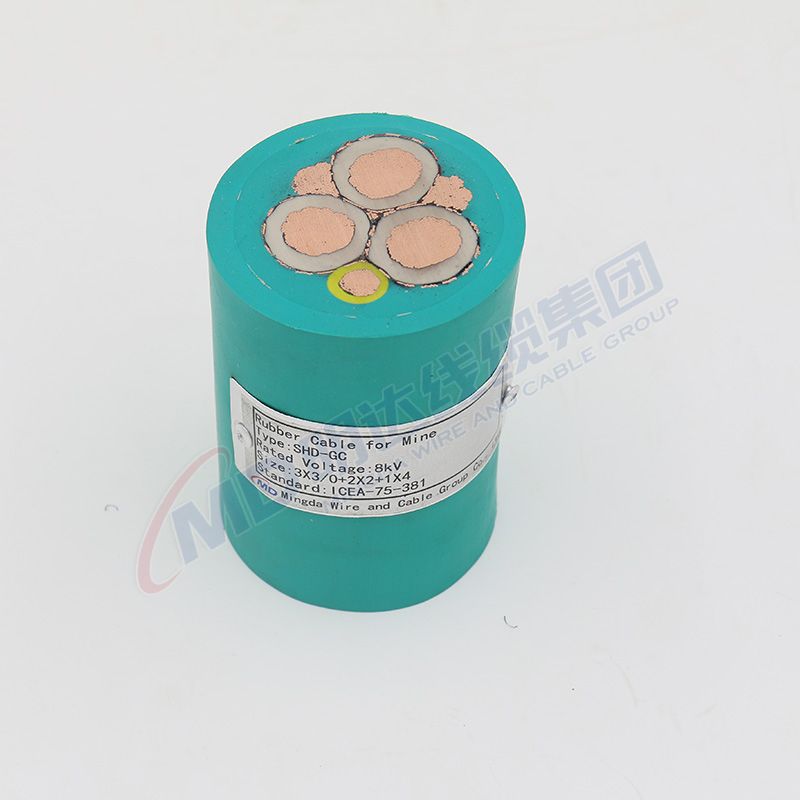10 月 . 15, 2024 23:42 Back to list
Understanding Electric Cable Wiring for Safe and Efficient Electrical Installations
Understanding Electric Cable Wires Essential Components of Modern Electrical Systems
Electric cable wires are fundamental components in the complex web of modern electrical systems, connecting various devices and ensuring the flow of electricity necessary for daily operations. Whether in homes, industries, or specialized facilities, these wires play a crucial role in powering our lives. Understanding electric cables, their types, uses, and safety implications can enhance our appreciation of this vital infrastructure.
Types of Electric Cable Wires
Electric cables come in various types, designed to serve specific functions and environments
. The most common types include1. Non-Metallic Sheathed Cable (NM) Often found in residential buildings, NM cables are lightweight and flexible, making them easy to install. They typically consist of two or more insulated conductors and a bare ground wire, all wrapped in a non-metallic sheath for protection against moisture and abrasion.
2. Armored Cable (AC) Designed for protection in harsh environments, AC cables have a metal armor that provides added mechanical strength. These are commonly used in industrial settings and where cables may be exposed to physical damage.
3. Underground Feeder Cable (UF) As the name implies, UF cables are intended for underground installation. They are designed to resist moisture and have a durable outer jacket that protects against harsh soil conditions. These cables are often used for outdoor lighting and power supply in yards or gardens.
4. Coaxial Cable Often recognized for its role in transmitting television signals, coaxial cables consist of a central conductor, an insulating layer, a metal shield, and an outer insulating layer. This design allows for minimal interference in signal transmission.
5. Twisted Pair Cable Widely used in telecommunications and data networks, twisted pair cables consist of pairs of wires twisted together to reduce electromagnetic interference. They come in two varieties unshielded twisted pair (UTP) and shielded twisted pair (STP).
Applications of Electric Cable Wires
electric cable wire

Electric cable wires are utilized in a myriad of applications. In residential settings, NM cables power lighting fixtures, appliances, and outlets. In commercial and industrial contexts, AC and UF cables supply electricity to machinery and outdoor installations. Furthermore, coaxial and twisted pair cables are vital in the telecommunications sector, supporting everything from broadband internet to television broadcasting.
Beyond transmission and distribution of electricity, these cables are also crucial in renewable energy systems. For instance, solar power systems use specialized cables to connect solar panels to inverters and batteries, ensuring efficient energy conversion and storage.
Safety Considerations
Working with electric cables poses significant safety risks, making compliance with standards and regulations imperative. Key safety measures include
1. Proper Installation Ensuring that cables are installed according to local codes reduces the risk of electrical fires and equipment failures. It is advisable to hire qualified electricians for installation tasks.
2. Regular Inspections Routine inspections can help identify wear and tear, frayed insulation, or other damage that could lead to hazards. This proactive approach can prevent accidents and extend the lifespan of the electrical system.
3. Use of Quality Materials Selecting cables that meet or exceed national safety standards ensures reliable performance. Poor-quality materials can compromise safety and lead to significant issues in the future.
4. Awareness of Environmental Factors Recognizing that different environments (like extreme temperatures, moisture levels, or chemical exposure) require specific types of cables can help in selecting the right product for the job.
Conclusion
Electric cable wires are indispensable in our electrically-driven world, influencing everything from household convenience to industrial productivity. A thorough understanding of the various types of cables, their applications, and the associated safety considerations not only enhances our awareness but also promotes responsible and efficient usage. As technology advances, continued innovation in cable manufacturing will further enhance their effectiveness, supporting the growing demands of our society.
Share
-
Understanding the Differences Between Wafer Type Butterfly Valve and Lugged Butterfly ValveNewsOct.25,2024
-
The Efficiency of Wafer Type Butterfly Valve and Lugged Butterfly ValveNewsOct.25,2024
-
The Ultimate Guide to Industrial Swing Check Valve: Performance, Installation, and MaintenanceNewsOct.25,2024
-
Superior Performance with Industrial Swing Check Valve: The Essential Valve for Any SystemNewsOct.25,2024
-
Industrial Swing Check Valve: The Ideal Solution for Flow ControlNewsOct.25,2024
-
You Need to Know About Industrial Swing Check Valve: Functionality, Scope, and PerformanceNewsOct.25,2024